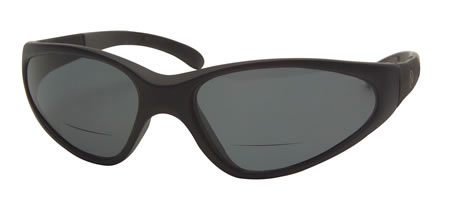 When I had Lasik eye surgery a couple of years ago, one of the side benefits was that I discovered the wide world of non-prescription sunglasses. Not surprisingly, I quickly became overwhelmed with the number of choices out there (read about my current favorite set of shades here).
When I had Lasik eye surgery a couple of years ago, one of the side benefits was that I discovered the wide world of non-prescription sunglasses. Not surprisingly, I quickly became overwhelmed with the number of choices out there (read about my current favorite set of shades here).
Enter my good friend Robert Earle Howells. His new website SunglassesBuyersGuide.com is designed to provide answers to all those questions you may have had about frame materials and lens tints but didn’t know who to ask.
With warmer weather just around the corner (c’mon people, think positive here!), I asked Bob to share some tips that can help us all make sense out of the seemingly endless selection of sunglasses out there:
Why did you start SunglassesBuyersGuide.com?
I’ve always appreciated any piece of gear that helps me better enjoy the outdoors. Years ago, as a writer for Outside magazine and the editor of the annual Outside Buyer’s Guide, I was fortunate enough to test all kinds of great gear including sunglasses. I always had a particular fondness for sunglasses—they enhance vision, protect your eyes, and make you look better than you really do. Even if they cost a couple hundred dollars, that’s a bargain. Cataract surgery last year also renewed my commitment to protecting my eyes with great shades.
Is there such a thing as an all-around pair of sunglasses, or do you recommend having different designs for different purposes?
While there certainly are multipurpose sunglasses, I suggest owning at least two pairs: one for active sports, another for casual streetwear. Protection is the priority for sports, while fashion and great optics take center stage for everyday sunglasses. For example, I love sunglasses with glass lenses—the good ones are optically brilliant—but I’d never wear them for sports, because they can shatter. It’s possible to get even more specific, because you might not wear the same sunglasses for, say, mountaineering as you would for mountain biking. You’d want very dark lenses for walking across snowy slopes, while riding a mountain bike in and out of the woods you’d want lighter, more contrasty lenses, or maybe even photochromic lenses that lighten and darken automatically.
What are the most important features you’d recommend someone look for in a new pair of sunglasses?
Let’s call 100 percent UV protection a given. Next up in importance is the sheer quality of the lenses, their visual sharpness. That’s hard to judge at a glance, which is why I strongly recommend buying name-brand sunglasses. The major companies do the R&D, the lab work, the ongoing testing, to make sure their lenses are sharp and won’t cause eyestrain. Then comes aptness for the job: for example, sunglasses with a lot of wrap for sports where you need peripheral protection.
What should someone expect to pay for a decent pair of shades?
Honestly, you’re taking your chances when you spend less than $100. Those inexpensive shades may seem good at first, and you congratulate yourself on your bargain-finding prowess. But wear them for hours at a time and they’re likely to strain your eyes. You might not even attribute that feeling to your sunglasses; you might just feel crummy or not refreshed after a day in the sun. All that said, I have found some pretty good sunglasses for under a C-note, and you can find reviews of those on my site.
What’s with all these funky lens tints?
A lot of what look like tints are actually just coatings that you see from the outside. They may or may not have a function other than to be, well, funky. It’s the base tint that counts here, however—what you see looking through, not at, the shades. Fortunately, there are only a handful of base tints, and each has a purpose. Gray and green are color-true and calming. Bronze and copper are high-contrast and great for a range of light conditions. Rose and yellow are designed for low-light conditions.
There are enough brands and styles out there to make your head spin—can you name a handful of your favorite top-quality brands?
My favorites are the ones on my site. I don’t review junk because it’s generally a waste of time and money to deal with the kinds of sunglasses you find in discount stores or gas stations. And, sad to say, the same goes for a lot of designer sunglasses that people spend $300 or $400 for. You’re paying for a name and a look, not for good lenses. That’s not the case with the more expensive sunglasses on my site. When you fork out for Oakley, Maui Jim, Kaenon, Hobie…you get a great look and great lenses. So my advice is always to buy from companies that make sunglasses, not handbags.
Leave a comment